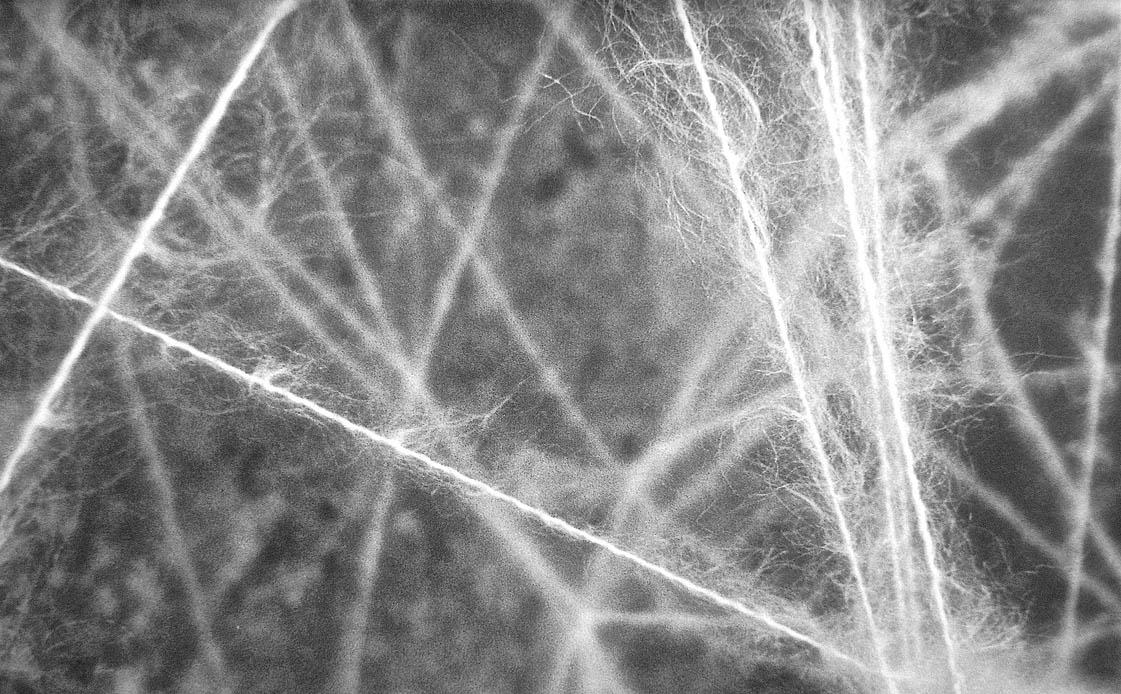Adrian Aramă
The story is mainly silence, a continuous speech, heard on the outskirts of any meaning; the story de‑builds the house,
1:
Once upon a time there was a white house,
at the end of the road,
woven from yarns of mallow,
linked in strands of smoke,
hemmed by edges of the clouds,
a house built in the light of the dawn,
bridged with the foam of waves,
far away, in the longing for banks,
at the tall windows’ crossroads,
in the flight of grandiose birds.
Once upon a time there was
a house fruited in the sleep of the stars,
milled in the fairies’ springs,
with fires still mashed in all the sky’s dowry
and its hearth enveloped in story dust.
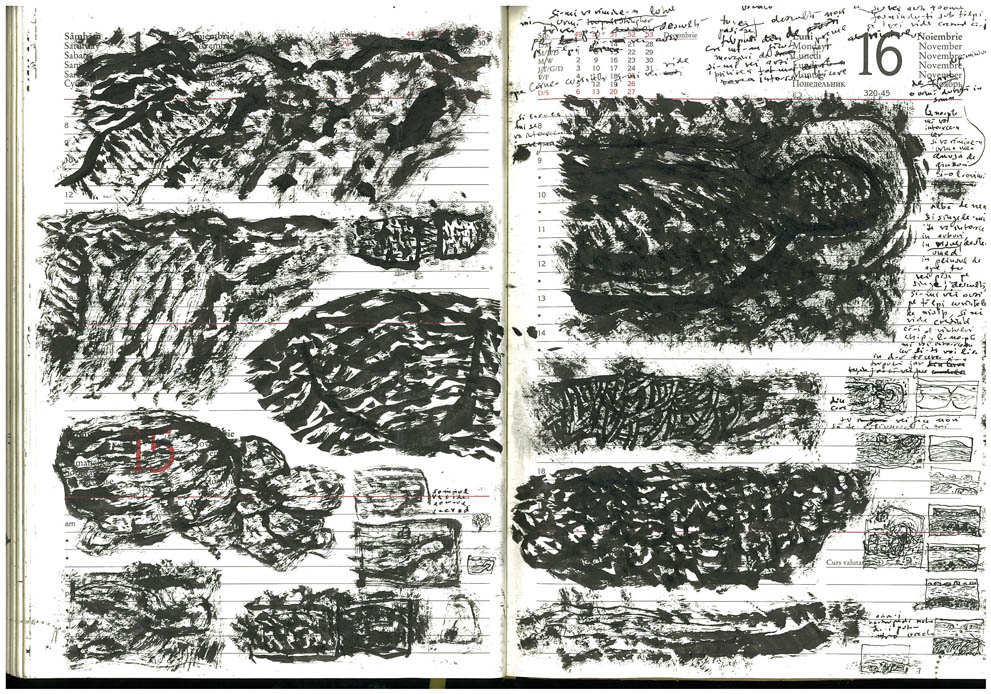
The story is mainly silence, a continuous speech, heard on the outskirts of any meaning; the story de‑builds the house, it rebuilds it and changes it from home into a cup filled with sky, into a secret cup, whilst moving its core from the human thought and gesture stuck crossroads in a hazard and a sidereal distortion, intuited spiritually; the story is happening in the space and time melt by the longing for a circle of light, dim for now, but promising as an eternity and incomprehension, emotionally accessible.
The storytellers cannot be doctrinaire architects, visionaries, as far as they’re escaping themselves, their ego being replaced by the goodness and kindness of an understanding and interpretation of the world, built by love and the state of communion with the whole Being. The narrator, which is more than an activist of human life’s harmony with nature and the universe, and less a theological doctrinaire than a minister of religions, whispers, murmurs, whiffs his speaking, keeping himself more in the spirit of the story, and of a flowing sound, modulated by the twists and loops into the state of mystery. He is not an actor of the show, so he is able to identify with the speaking, living it and transferring the meaning of words from which he weaves their magic into the real materialization.
The houses can be both stories and storytellers, provided they deny any documentary profitable speculation, and remaining pure passing, thresholds and windows between the worlds which are always on the edge of thought, after and in its perishable and transient shade.
The narrator does not create tales, he de‑conceals them, absolving those listening to the truth, as vulnerable to reason, the more evident and exemplary for the soul. Just like the peregrine, he is the bearer of revelation, a traveler between here and never, between now and nowhere. The storyhouse at the turn of sight acquires the imagination of Being, of living in simplicity and harmony, a consensus in which it agrees to remain a discreet part in the Universe, telling the one who dwells in it the mystery of life and its meaning. The stories are born in the countryside, as philosophy of the man conscious of his smallness and scarcity, with the visible and invisible accompanying its dust. The stories ensample his purpose of innocence, covering him in the protective wrapping of alight faith, of communion with the place (also related as a story of the place).
The narrator «translates» what is and turns a seemingly inaccessible place and a time into perception, having, maintaining and cultivating such an ability (grace) of intuition, of sensitivities and generosity, in so far as it unfolds and gives itself away like a clear mirror of «reality», other than the obvious. Perpetrator of place‑house, he tells the story with such naturalness and simplicity and, as the «walls» he builds, rather than confine and separate, unite the house‑story with the universal home, not in the sense of the authenticity of the gesture and the «great» word, but in the invisible and particular melting of the universe. Therefore, the house‑story is alive, living with the world’s circles, a world that lives, that endures, and consumes like a perpetual replay. The tale time is perishable, escalating in magical substance and essence and descending in the appearance of a suspended narrative, simultaneously with the misunderstanding of its transcendent role and the profane everyday translation. The place or space marked as house is both useful and useless in an intertwining away from any predetermined induced intentionality, giving essence to the one who dwells in it, by listening and living the story in the rich existence, creating perennial harmony of beauty.
The tale builds and wrecks in ruin and by ruin decreases the light of the peripheral exteriority (in shape), enhancing the light interiority and augmenting it by an unbearable and incomprehensible punctual concentration to the reason of gregarious and simplicity. The house’s ruination in a nature that overwhelms it in a friendly vegetation, gives the story its sap of living, the chance to be concurrent with the magic seed’s ascending time belonging to the cosmic tree. The tales were not theory, nor practice, they’re pure living, which is the reason why they are written in white, unseen print, and also read through words; they find meaning in the space between utterances; therefore, the houses, as space and also chains of heaven downsized in human thought, are actually just stories of a momentary living among the stars. When homes are transposed (transfigured) in scripts, they only remain stories in the concomitant gimmick of a limited space temporarily lived, in consonance with the story symbol, as ideograms / calligraphic lettering and spatial‑cosmic posture of the perpetrator of the sign‑house. As place for meditation, the home‑tale de‑sign substitutes the house and becomes available for imaginative living, a pre‑existence of the substance house, telling it away from the secretly dreamy allegation, indifferent to the projective recourse. The pardon of the story house envelopes its core cosmic positioning with the waves of a fluidity synonymous to the sources and ocean horizon’s concomitance, beginning and end of creatures slipping through the troubled waters of life.
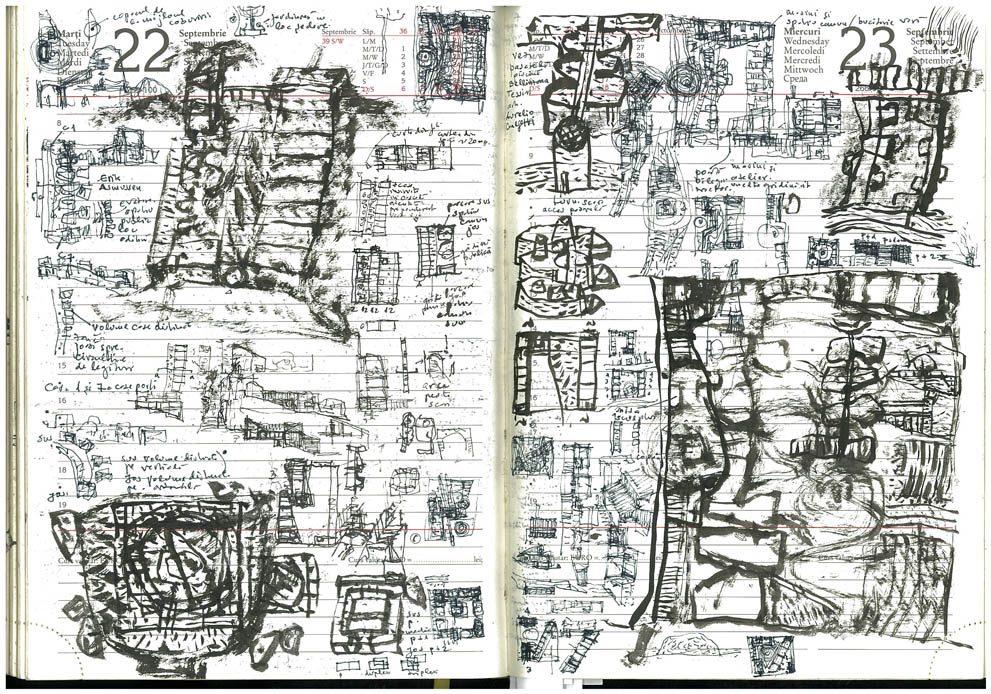
(1)
The story is a point, a core, a smallness of reality to the size of non‑recognition, to go beyond the immeasurable fabulous; a sliding bridge from impossible to possible, it’s a spherical luminescence amplified in the darkness of lucid ignorance, of prosaic knowledge, of surface, acquired «educationally» as a memory and recollection of the initial knowledge (and initiatory) inherited from the age‑old beginning of the world; the story becomes a weightless condition, floating in her own space of sidereal reverie and misrepresentation in an emotional and simplest understanding of the meaning of life, apparently so complicated.
The tale is born in the silence that occurs at the diurnal end of time, when the image of the world and things fades and disappears into the night of strengths lowered in the thought of human desire, melting the query toil worn and permanently measured as nearness to the threshold of nothingness, in the piece of wonder that imperceptibly steals the land from here of the word, passing them «beyond» into the magic land of the singing.
The tale is a house in verses, a house of words separately misunderstood, but felt in their simultaneity as an accounting state, a poetic place where it`s not the body as exteriority and sensorial exterior that receives shelter, but the soul that finds its meaning.
2:
I gently push the fingers
on the thin face of the sky
and feel
in the eyes of the light, rounded
the story house
as rises in the water‑skyscrapers
and gathers the walls of snow
closer and closer,
around the shadow of a star,
I’m listening to the silence of the window
of life
and it feels like in my hands
I’m holding a boreal rumor
and houses
spreading in thresholds of wind,
narrated rooms without a word.
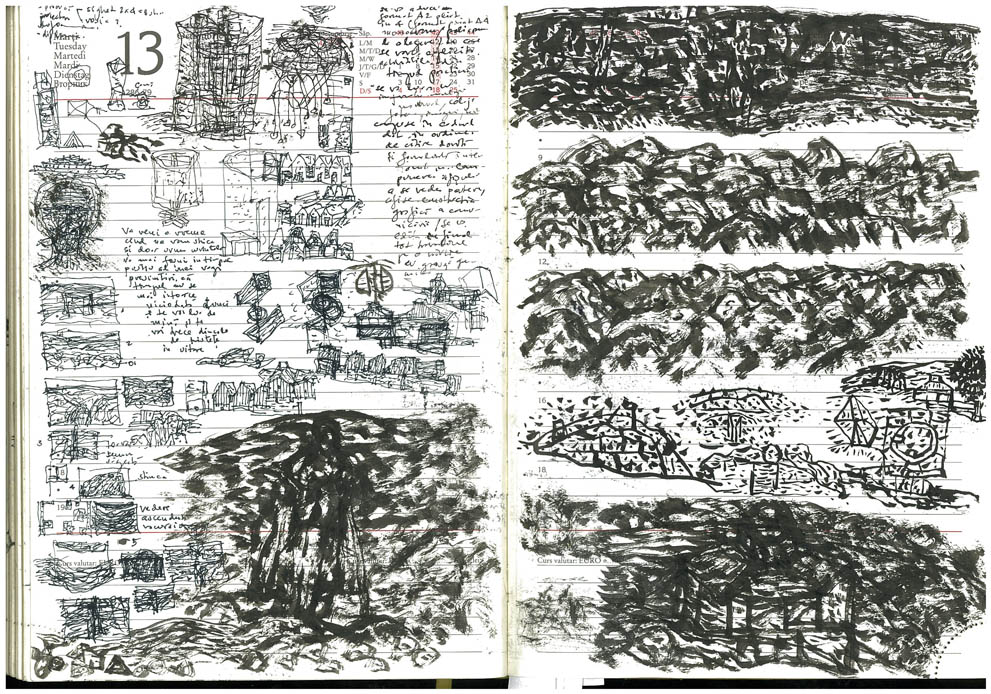
stories from not know when,
when I was dust,
and stars
and heavy sleeping.
the houses were spread in the wind,
wearing the crown of white sails,
flimsy walls revolved in a flight,
joining waters at the edge of the clouds.
stories not know how,
rolled over in core of the smoke,
seeded in homes with fireplace,
and in the dream`s traveler tent.
stories amiss,
silent in the fertile horizons,
in the boundless homes,
in the wonderer dream`s sleep,
returned to the end of the world,
in the nameless peace,
in the homes created in longing,
and the thought without latch.
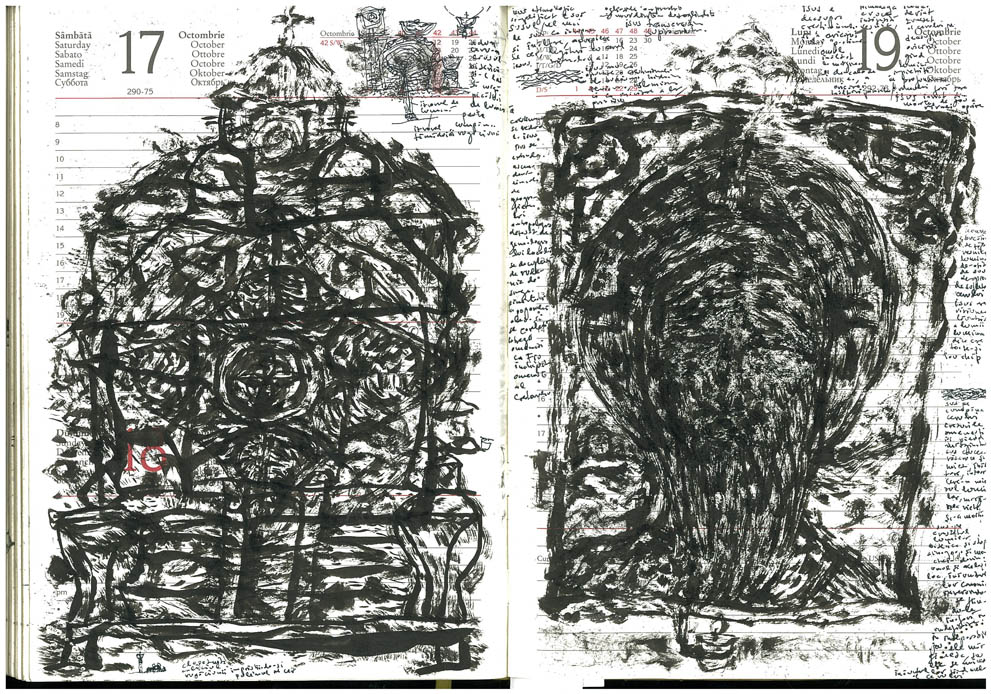
The tale has no plural, it is unique, and functions as a core of the «real», as its last interiority; therefore, the tale house is the same wherever, no matter of time and space. The tale is a beginning, a genesis that spreads the multitude of life. The tale house is unchangeable in its simplicity, clarity, humility, good will and harmonization of living. Even if the substance of its «geo‑graphic» and «historical» lateralization is nuanced, the spirit that binds its flesh (and its instances) is the same; the letters and words of the story are different by language and culture, but the space between them is the same tale; the same silence the sayings and meaning humanly uttered are rising and going back to.
The storytelling as substance inheritance and discursivity in defining (and coagulating) its literary surface meaning (or sub‑meaning) outlines its area of questioning, limiting its descriptive content inside a conclusive rhythm, directed congruently to the time run horizontally, as vector. The literally vector content into the apparent or disguised «frame» of a stylistic resolution, inventoried and positioned within the limits of habit, the render substance subjects to its limitations, remaining trapped in a premeditated external constraint. But the tale refuses any limitation, any contour filled only with the substance of some «fables» repressed in therapy (or psychotherapy). Its literalness remains the permanent sonority (vibration) of a beginning, the sign of a raw writing resumed without a run out in the accounted limitations of hearing. Therefore, it is whispered, her letter being fluffy, a scattering and unstable clotting and rustle of light, a maternal consolation of a place unseen, before our time and regardless of existing human passage through the ages of names. The tale is born not outside us, at the end of the hand or at the end of the look, outlining our thoughts, thereby escaping it of any danger raised by the convenience of «routine» understanding, but contrary, the tale is born within us, guiding us at every moment to any permitted outside edges, with risk of falling from the sky and becoming enchanted birds. (3)

 Romană
Romană English
English



